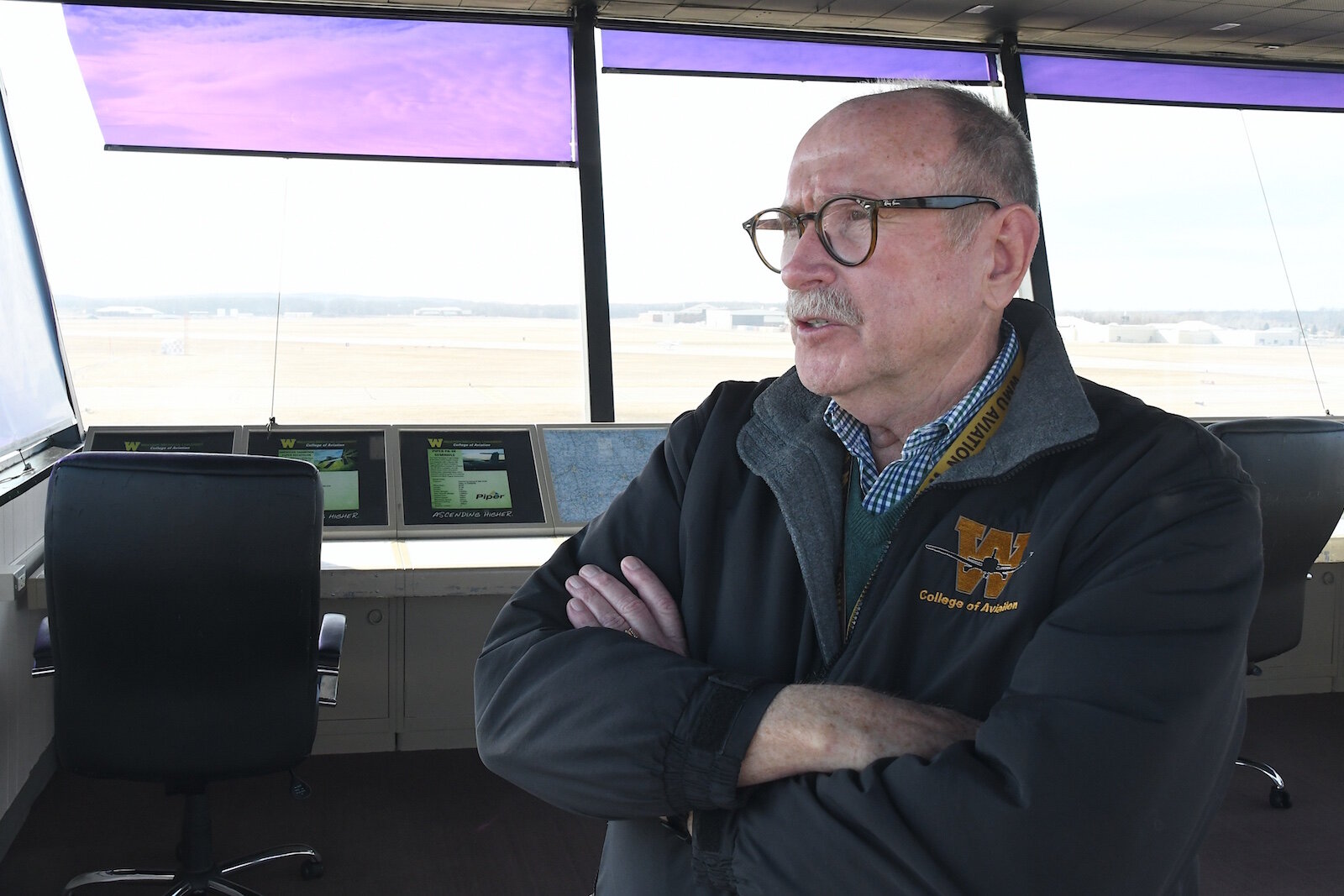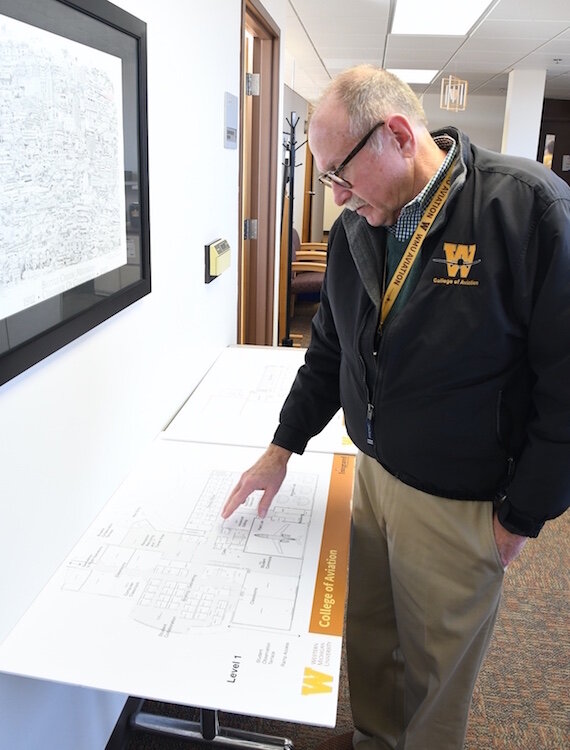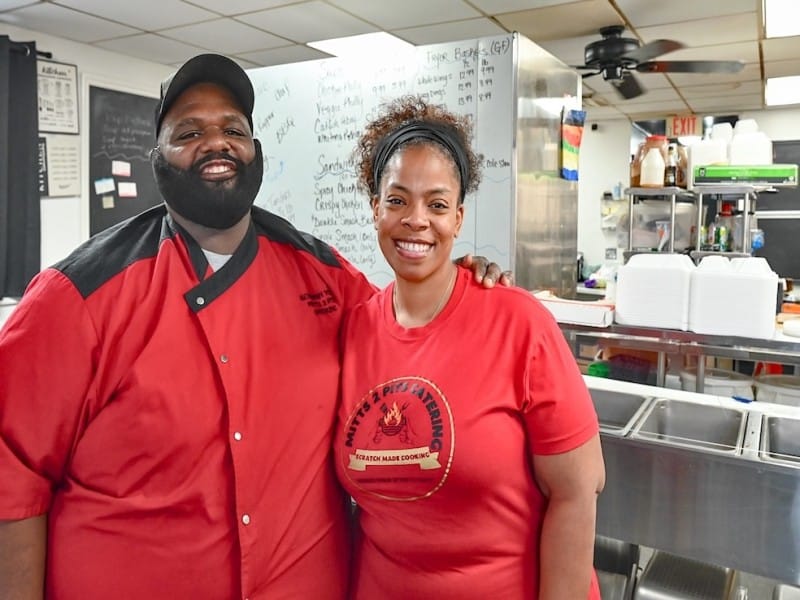As pilot shortage grows, WMU College of Aviation expansion expected to be completed later this year
The new facility in Battle Creek will enable the college to increase its enrollment to a total of between 2,000 and 2,400 students, up from 1,200 students now enrolled in the WMU College of Aviation.
“A madhouse,” that’s how Dave Powell describes what it may look like as domestic and international airlines scramble to find pilots to fill predicted shortages that will begin in 2023 and grow in severity by 2025.
The timing couldn’t be worse as the United States and the rest of the world begin a cautious recovery from the havoc wreaked by a global pandemic and growing numbers of people resume air travel.
Based on a modest recovery scenario, industry analysts with Oliver Wyman, a New York-based management consulting firm, a global pilot shortage will emerge in certain regions no later than 2023 and most probably before. However, they say, with a more rapid recovery and greater supply shocks, this could be felt as early as late this year.
“Regarding magnitude, in our most likely scenarios, there is a global gap of 34,000 pilots by 2025. This could be as high as 50,000 in the most extreme scenarios. Eventually, the impact of furloughs, retirements, and defections will create very real challenges for even some of the biggest carriers,” according to an article on the Oliver Wyman website. “One cushion airlines have created consists of 100,000 pilots still on payroll but flying reduced schedules or on voluntary company leave. In the US, such programs have been very popular and will provide the airline some flexibility once the industry begins to recover.”
Powell, Dean of Western Michigan University’s College of Aviation, has been talking about these shortages for several years. This is why he was relentless in his efforts to secure funding to expand the school that’s based at Battle Creek’s Executive Airport from its current 16,000 square feet to 70,000 square feet. The $22 million project received about $15 million in state funding with the remainder coming from WMU.
“Everything we’ve done in this college has been pretty much on our own,” says Powell who joined WMU in 2003 as assistant dean of its College of Aviation and became dean in 2008. “We’ve had 19 budget cuts since I’ve been here. We’ve never had a budget increase and that’s driven primarily by state cuts to higher education. Of all of the universities inside the state, the big three get a larger share than the small 12.”
As an example of these funding imbalances, he compares the University of Michigan’s $5 billion endowment to WMU’s $400 million endowment.
To secure the funding for the expansion Powell says he “courted a lot of state legislators to come out and see our program. It had to be justified. The university’s been supportive but it took a groundswell of other support to make that happen. I’ve got to find different avenues and I’ve got to keep working at it.”
The expansion, he says, is needed to accommodate growing numbers of students seeking careers in all areas of the aviation industry.
The new facility will officially open on Sept. 17. Powell says he chose this date because it’s close to the actual date of the 24th anniversary of the WMU’s aviation school’s move to the airport.
“On Sept.19, 24 years ago it opened for the first time,” he says. “I tried to get it as close to the 24th anniversary to honor the past and look with excitement to the future.”
Currently, there are 1,200 students enrolled in the College of Aviation. While the majority seek to become professional pilots, others are focusing on careers in airline management and administration and aircraft mechanics and maintenance. The new facility will enable the college to increase its enrollment to a total of between 2,000 and 2,400 students. It will offer new classroom space, a computer room, composites/paint laboratory upgrades, a state-of-the-art simulation center, a premier research center, student briefing rooms, faculty office space, a café, and other amenities, as well as the latest technology.
During the past 11 years, Powell says there has been an 80 percent increase in enrollment at the Aviation College. On Dec. 16 the program was forced to stop accepting flight students because of the lack of funding, faculty, and staff to adequately support their studies – a frustrating decision for Powell to make.
“There were other programs students could get into rather than waiting. I was telling them that if they had a second or third choice, they need to look at that,” Powell says.
Having to turn prospective students away only strengthened his resolve to address an issue he became aware of in 2000 while working in employment processes at United Airlines. He was hired there in 1986 as a pilot eventually going on to become a flight manager, assistant chief pilot, and instructor chief pilot at Chicago’s O’Hare Airport.
“A year later 9/11 happened and it shut things down. In 2007, the need for pilots wasn’t there and in 2008 we had the next recession, and that killed things for a couple of years,” he says.
Three years later major domestic carriers, including American, Delta, and United airlines were faced with the impending retirements of mechanics and pilots who are part of the baby boomer generation. These major carriers were looking at losing half of their pilot force over the next 10 years.
Out of the shadows, on everyone’s radar
As it positions itself for additional growth, there are still too many people who don’t know that Battle Creek is home to the country’s third-largest aviation college. Or that the Executive Airport where it’s located is the third busiest for aircraft traffic in Michigan, says Battle Creek City Manager Rebecca Fleury.
“This expansion will help bring it out of the shadows,” she says of the College of Aviation and the airport.
The expansion also will strengthen a unique synergy that includes the space the college shares on the airport grounds with Duncan Aviation and the nearby Fort Custer Training Center for the Michigan Army National Guard.
“I think it elevates Battle Creek and what we know of Battle Creek as being a wonderful place for students and that brings a whole other layer of new vibrancy here,” Fleury says. “To have Duncan right next to the College of Aviation is a natural fit for students to seek jobs there.”
Powell says his graduates are as highly sought-after as students who graduate from Embry-Riddle Aeronautical University in Florida and the University of North Dakota, the number one and two aviation colleges respectively.
“What we have is absolutely the finest equipment in collegiate aviation today. We deliver a higher level of sophistication,” he says. “Embry and North Dakota have hundreds of millions of dollars in endowments and we compete very well.”
There’s no disputing the importance of WMU’s Aviation College to the community and the airport, says Joe Sobieralski, President and CEO of Battle Creek Unlimited.
“We take for granted that it’s there,” he says.
But recent and future plans for growth may go a long way to changing that.
The opening in January of WACO Kitchen, a restaurant on the second floor of WACO Aircraft Corp. based at the airport, has helped to get the airport on the radar of many people who may have never had reason to go there before, Fleury says.
Airport officials have been putting together events to draw in people from all over the United States, including an AOPA (Aircraft Owners and Pilots Association) fly-in for pilots to showcase the resources available to them at the airport.
Fleury also cites the expansion of WACO and the focus on the production of unmanned aircraft as potential game-changers for the airport and tangentially the aviation college.
“We are looking at development on the west side of the airport. We think it’s a very developable area for the aeronautics industry — whether it be unmanned aircraft or other businesses like Duncan to further support aviation careers and the profession,” Fleury says. “It opens up a lot of potential if we can site prep that area.”
She says she’s hopeful that funds for the development of the 10 acres available will come through President Biden’s new infrastructure plan.
“The airport is one of our biggest infrastructure assets,” Fleury says.
A slow and steady ascent
As Fleury and economic developers address the physical growth of the airport, Powell will be focusing on controlled growth in his program to maintain the quality of what’s being offered. There are currently 24 faculty within the College of Aviation and there are plans to hire two more, bringing to about 90 the number of full-time and part-time employees.
Additional faculty and staff will be brought in as needed, Powell says.
“I’m not a pilot anymore; I’m a passenger. I want to make sure our graduates will be able to take care of me and my loved ones when we’re flying,” he says.
He also wants to ensure that those graduates look like the real world. While the expansion was his number one priority, diversifying his student population has been an ongoing focus.
Powell says that about 7 percent of all pilots and airline mechanics in the United States are minorities. WMU’s College of Aviation is at 33 percent.
“We’re doing better, but we’ve got a long way to go. There are a lot of people of color and half of the world is female. Even though we’re doing better, it isn’t good enough,” Powell says. “We’re working now with trying to start a relationship with a high school in Detroit. We hope to get that going. We have a nice mix of diverse students and they’re stepping up in leadership positions.”
Pre-COVID the Aviation College hosted anywhere from 1,500 to 1,800 local students from first grade up to middle school who visited to learn about the program in the summer months. Powell says he had student ambassadors who gave tours from 9 a.m. to 6 p.m., six days a week.
Despite this exposure, Powell says he thinks people don’t appreciate that they can get into aviation or the opportunities they can realize from enrolling. He says his students graduate on time and have the opportunity to earn more than $300,000 annually at the height of their careers.
“Since 1989 we’ve been working on diversifying aviation. When I came here in 2003, I asked ‘why aren’t we?’” he says. “We are the third-largest aviation program in the country and we reside in a very, very diverse community. How can you not want to engage in that?”

















